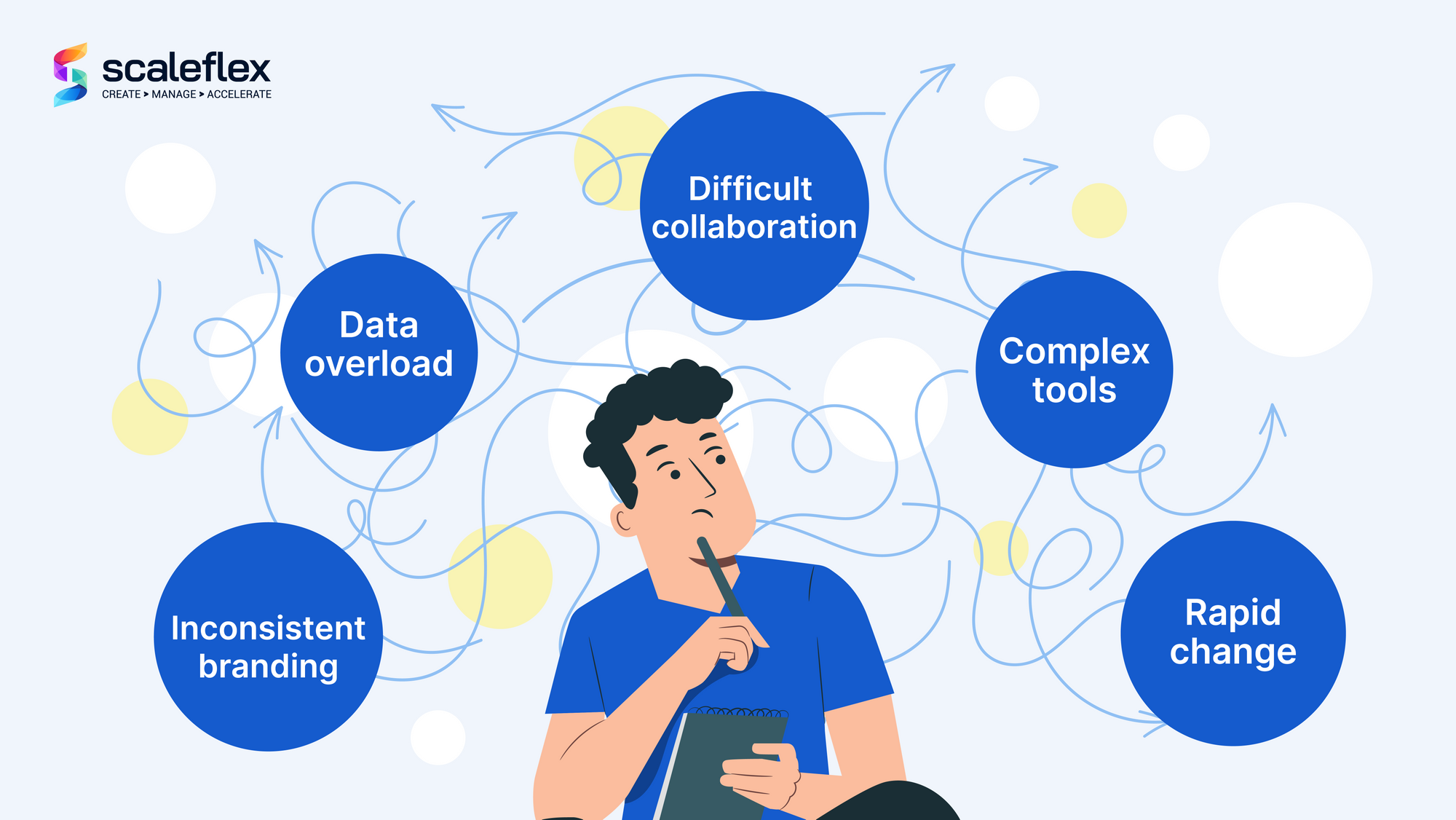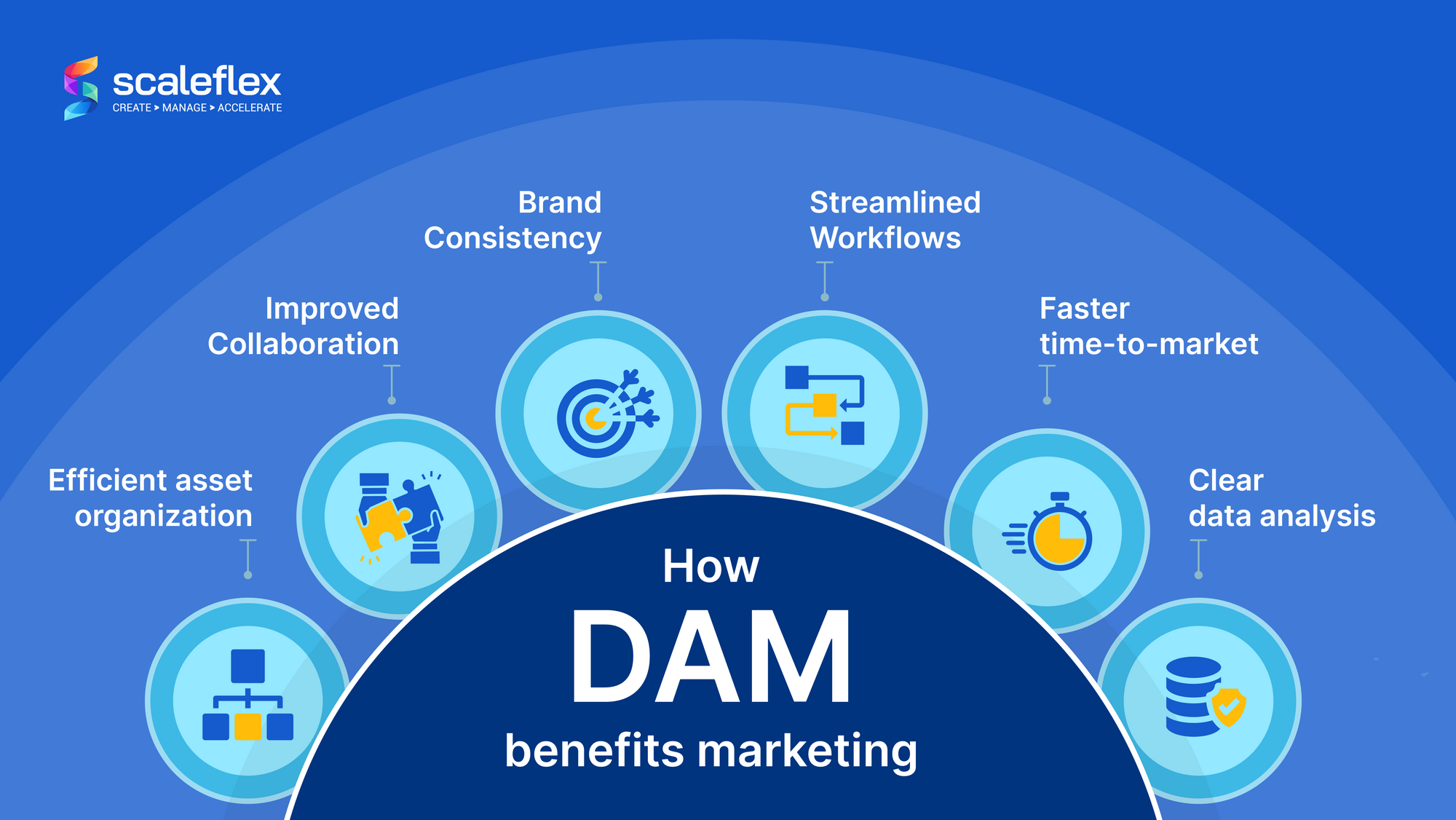Discover The Benefits Of Digital Asset Management for Marketing
In today’s challenging and ever-evolving business landscape, marketing teams face numerous challenges. Chief among them is the overwhelming amount of content that’s constantly being generated via various digital channels: from social media platforms, to websites, to email campaigns, managing and understanding data can be daunting, and teams have to navigate different metrics in order to extract meaningful insights to inform their decision-making.
The rapid evolution of both technology and challenges is another pressing challenge that leaves no room for respite. As new social media platforms crop up, algorithms change, and consumer preferences shift, marketers must keep on their toes to maintain a competitive edge. This means constant learning and adaptation.
Finally, digital marketing tools are becoming increasingly complex, and managing the numerous platforms used for different marketing needs is time-consuming as well as error-inducing as stats, data and assets need to be bounced back and forth between tools. Coordinating efforts across platforms and guaranteeing consistency throughout the brand’s messaging becomes demanding.
In a nutshell, marketers today are concerned with data overload, keeping up with technological advancements, mastering strategies and standing out amongst competitors. To overcome these challenges one requires agility, creativity, continuous learning as well as the strength of a Digital Asset Management tool. In this article, we’ll see how incorporating a DAM in digital marketing can ease some of the pressure.

What are the benefits of Digital Asset Management for marketing?
DAM can play a pivotal role in marketing efforts, as it offers a centralized solution to organize, share and leverage digital assets.
Through efficient asset organization, improved collaboration, brand consistency and streamlined workflows, a Digital Asset Management for marketing can guarantee faster times to market, data analytics integrations and much more. Let’s explore each of these in detail.
DAM ensures efficient asset organization
A DAM in marketing offers a centralized repository for all of a brand’s digital assets: images, videos, documents, files, etc. Within this repository, it provides metadata tagging in order to enable swift and painless retrieval of said assets. This system guarantees saved time and efforts during campaign creation and management, as marketers can easily locate the specific images, videos or documents they require, streamlining their workflow and enhancing their overall productivity.
DAM promotes improves collaboration
Within a DAM for marketing, there are also real-time asset sharing and collaborative features, which eliminate the issues linked to version control. These features facilitate seamless teamwork, not only among marketing stakeholders, but with other teams and external contractors, too. The team members can access and progress simultaneously on the same assets, eliminating communication silos and improving efficiency.
DAM guarantees brand consistency
As a DAM stores approved brand assets in one single and accessible location, it becomes the guardian and enforcer of brand integrity. Marketers, or any team member for that matter, can easily have access to the latest logos, fonts and templates. This quickness and ease of access ensures consistent brand representation throughout marketing materials. It prevents the inadvertent use of outdated or unauthorized assets, doing wonders in maintaining brand credibility and coherence.
DAM facilitates streamlined workflows
Within the DAM, marketers can create asset collections for any specific campaign, simplifying the long process of material gathering for marketing collaterals. It’s a feature that streamlines workflows and allows teams to swiftly assemble the needed assets for social media posts, ads, website, marketplace, and any other promotional channels.
DAM ensures faster time to market
A DAM’s quick and easy access to all approved assets and documents streamlines workflows, enabling marketing teams to promptly respond to market trends and opportunities. The agility provided by the DAM reduces the time needed to launch campaigns, it ensures timely delivery to all target audiences as well as maximizes marketing impact.
DAM provides data analytics integrations
DAM in marketing solutions often seamlessly integrate with analytic tools, and some even offer their own analytics dashboards. This provides an invaluable insight into the company’s asset performance. From that, marketers can track how assets are used, measure their effectiveness, and optimize their use for future campaigns, based on strictly data-driven decisions. Some DAM’s, like Scaleflex’s Filerobot, take this one step further, thanks to the use of Artificial Intelligence which automatically analyzes the data and optimizes your asset usage for maximum impact and return on investment.
We can conclude that in light of today’s difficulties in the sector, Digital Asset Management for marketing is becoming an indispensable tool in its efforts and strategies. With capabilities ranging from efficient asset organization to improved collaboration, brand consistency, better workflows and improved ROI, DAM empowers marketing teams to succeed in a very competitive landscape. It does this by enabling centralized asset, management, and optimization, making it a cornerstone of any effective marketing campaign.

Real life examples and use cases
In our current digital landscape, companies across many industries heavily rely on Digital Asset Management systems to streamline their marketing campaigns and strategies. As these systems offer centralized solutions for organizing, sharing and optimizing digital assets, they’ve become increasingly important. Here, we can explore five real-life examples of well-known companies that already harness the power of DAM to drive their marketing efforts.
- Nike has a marketing DAM system that ensures the consistency of the brand across its global operations. Counting an extensive library of marketing assets, Nike streamlines workflows, enhances collaboration and maintains its brand integrity through diverse channels and markets thanks to DAM.
- Unilever uses a DAM solution to manage its broad range of consumer brands. Ranging from Dove to Lipton, its marketing asset management system enables efficient asset organization, collaboration among global teams and adherence to brand guidelines.
- Nestlé relies on a DAM solution for centralizing marketing assets for its diverse portfolio of products. Counting brands like Nescafé and KitKat, its DAM system greatly improves asset accessibility.
- The BBC also uses a DAM system in order to handle its vast audiovisual content library. From news clips to promotional videos, its DAM platform enhances content organization, simplifies distribution and improves collaboration between teams.
- Marriott International has a DAM system that manages marketing assets for its global hospitality properties. Handling everything from hotel images to branding materials, the DAM ensures the consistency of the brand, streamlines asset distribution and enhances marketing efforts.
These examples illustrate the versatility and effectiveness of Digital Asset Management systems in current marketing strategies, as they play a vital role in many of the functions associated with marketing.
Key Takeaways
To conclude, we gather that Digital Asset Management for marketing is integral to modern strategies, as we can see by the example set by leading companies across industries. Some systems, like Scaleflex's DAM solution, which offers last-generation AI capabilities among others, centralize vast libraries of marketing assets, ranging from images and videos to branding materials, to important documents and files, enabling a more efficient form of collaboration and quicker retrieval of assets. This renders DAM systems not just mere tools but strategic assets that can drive marketing success.





